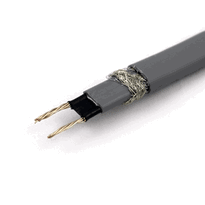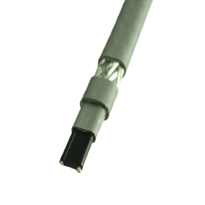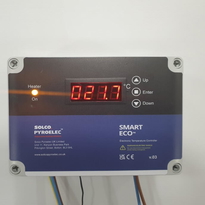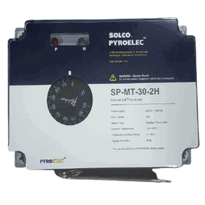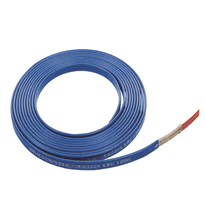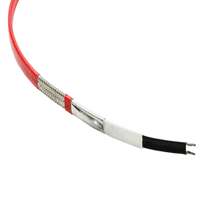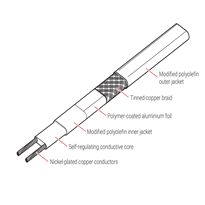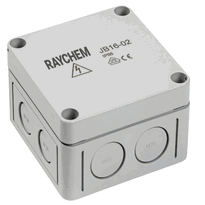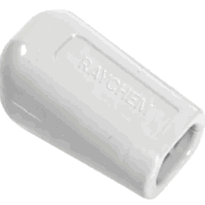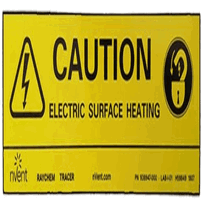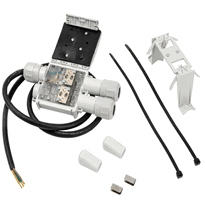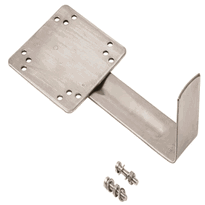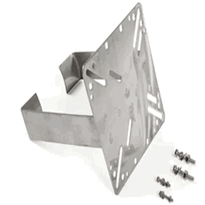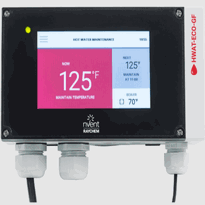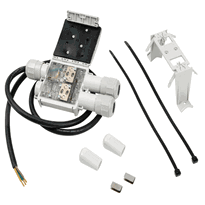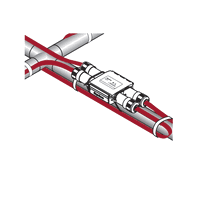Heat Wrap for Frozen Pipes
Heat wraps for frozen pipes are electrical heating cables designed to be installed along plumbing lines to prevent freezing. They convert electrical energy into consistent heat, which is transferred directly to the pipes, particularly in vulnerable areas such as unheated basements or outdoor zones.
Proper installation involves securing the wrap according to the manufacturer's instructions, avoiding overlaps, and connecting to GFCI-protected outlets. Ensuring safety, compatibility, and regular inspection can enhance their effectiveness. Further information can help optimize freeze prevention measures.
Understanding How Heat Wrap Protects Pipes From Freezing
Heat wraps protect pipes from freezing primarily by continuously generating and supplying heat to maintain the water inside the pipes at temperatures above the freezing point. These wraps convert electrical energy into heat, which is then transferred directly to the surface of the pipe, preventing the formation of ice and potential bursts. Proper installation is essential for optimal performance. Some heat wraps are equipped with automatic temperature adjustment features that respond to ambient conditions, ensuring optimal heating without overheating the pipe or wasting energy. Installation usually involves securely attaching the wrap with tape or zip ties, ensuring consistent contact with the pipe surface. In addition to direct heating, integrating heat wraps with insulation further enhances efficiency by reducing heat loss. This combination provides reliable, energy-efficient protection in environments prone to freezing temperatures, helping to safeguard plumbing systems from damage caused by ice expansion. Additionally, using advanced insulation materials can significantly improve heat retention, further minimizing energy consumption and maximizing protection.
Selecting the Right Heat Wrap for Your Plumbing Needs
Selecting the Appropriate Heat Wrap for Plumbing in the UK
When choosing a heat wrap for your plumbing, careful consideration of several key factors will help ensure effective protection against freezing temperatures. Correct selection not only safeguards your pipes but also contributes to their longevity and safe operation.
Pipe Material and Size
The compatibility of the heat wrap with your pipe material—such as PVC, copper, or steel—is essential. Each material has different heat transfer properties, so selecting a wrap suitable for your pipe type is crucial. Additionally, knowing the pipe's diameter ensures the wrap fits snugly, providing even heat distribution.
Coverage and Length
Accurate measurement of the pipe sections that require insulation is vital. This includes accounting for bends, joints, and any exposed areas. Adequate coverage prevents cold spots where pipes could freeze, so choosing a wrap with the appropriate length and enough flexibility to accommodate your pipe layout is recommended.
Regulation Type
Deciding between self-regulating and manual control heat wraps depends on your specific needs. Self-regulating wraps adjust their heat output based on the surrounding temperature, which can improve energy efficiency and safety. Manual controls, on the other hand, allow for user-set regulation, offering more straightforward operation where automation isn’t necessary.
Summary of Selection Criteria
Factor |
Details |
Application |
| Pipe Material & Size | Compatibility with PVC, copper, steel; diameter considerations | Ensures effective heat transfer |
| Coverage & Length | Proper measurement for entire pipe sections, considering bends and joints | Provides comprehensive freeze protection |
| Regulation Type | Self-regulating vs. manual controls | Optimises energy use and safety |
Making an informed choice involves a thorough assessment of your plumbing system’s specific requirements. Matching the features of a heat wrap to these needs helps maximize freeze prevention, safety, and durability of your pipes in the UK climate. Additionally, opting for condensate pipe lagging with weather-resistant coatings can enhance longevity and effectiveness during harsh weather conditions.
Proper Installation Techniques for Effective Freeze Prevention
Proper installation of heat tape is essential for ensuring effective freeze prevention and maintaining the safety and integrity of plumbing systems during cold weather conditions. Installation should commence with the plug end positioned near an accessible power outlet, ensuring a safe connection and ease of use.
The heat tape must be wrapped evenly along the entire length of the pipe, extending coverage below ground to the frost line for protection against underground freezing. Care must be taken to avoid wrapping over leaking pipes, as this can cause short circuits and additional damage. Properly insulating the wrapped pipes further enhances the effectiveness of the heat tape by reducing heat loss, making the insulation an important component in freeze protection.
Connect the tape directly to a GFCI-protected outlet, and secure it with appropriate electrical tape, avoiding crossing or overlapping the heating elements. Follow the manufacturer's instructions regarding spacing and insulation, and don't use extension cords, as this can compromise safety and reliability.
Adhering to these guidelines will promote reliable and safe freeze prevention, safeguarding your plumbing system throughout the colder months.
Safety Guidelines and Maintenance Tips for Heat Wrap Use
Electrical safety and usage precautions are essential to prevent accidents and to ensure the reliable operation of heat wrap systems. It's important to verify that the product has been approved by recognized organizations such as UL or NSF/ANSI, which confirms compliance with safety standards. Properly installed and maintained heat wraps can significantly reduce the risk of pipe bursts caused by freezing water expansion. Users should avoid placing open flames, such as blowtorches or kerosene heaters, near pipes. These pose significant fire hazards and risk producing carbon monoxide, which can be dangerous in enclosed spaces.
Maintaining a minimum distance of three meters between portable space heaters and flammable materials is crucial to reduce fire risks. Strictly follow the manufacturer’s instructions, especially when installing heating tapes or cables. Heating wraps shouldn't be wrapped fully around pipes unless the product is specifically designed for that purpose. Improper installation can lead to electrical faults or overheating. Regular inspection of heat wraps is vital; check for wear, tears, or damage to the insulation. Ensuring proper insulation and a secure attachment helps prevent electrical failures and overheating, thereby supporting safe and effective pipe protection during cold weather. Additionally, regular maintenance helps identify early signs of damage that could compromise safety. Proper quality assurance and adherence to safety practices are necessary to prevent electrical hazards and ensure long-term performance of the heat wrap system. Always operate heat wraps within the recommended parameters and follow safety guidelines to maintain a safe environment and prolong the lifespan of the equipment.
Additional Strategies to Prevent Frozen Pipes During Winter
Implementing a range of preventative measures can significantly reduce the risk of pipes freezing during cold weather. Insulation strategies, such as wrapping exposed pipes with high-quality materials like foam or rubber sleeves—particularly in unheated areas such as attics, basements, garages, or crawl spaces—provide vital thermal protection. Positioning these insulations along exterior walls or near windows ensures optimal effectiveness. Insulating pipes in unheated spaces helps maintain higher temperatures around the plumbing. Proper thermal insulation around vulnerable pipes minimizes heat loss and keeps water flowing smoothly in challenging conditions. Maintaining indoor temperatures above 13°C (55°F) and keeping internal doors open help promote consistent heat circulation throughout the property. Opening cabinet doors beneath sinks allows warm air to reach pipes located in these areas. Additionally, letting taps drip slowly, especially those situated farthest from the main water supply, encourages water movement and reduces freeze risks. Installing heat cables, leak detection devices, and insulating outdoor valves or hose bibs further strengthens your defenses against the cold. These combined actions create a comprehensive barrier against freezing, helping to safeguard your household plumbing throughout the winter months.
Conclusion
Ultimately, using a heat wrap is an effective method to prevent frozen pipes by providing targeted, consistent heat that maintains pipe temperatures above freezing. Proper selection, installation, and maintenance of the heat wrap are essential to ensure safe and reliable operation during cold weather.
Supplementing this approach with additional measures, such as insulating external pipes and controlling indoor temperatures, further minimises the risk of frost damage. Implementing these steps systematically helps to safeguard plumbing infrastructure and reduce the likelihood of costly repairs.








